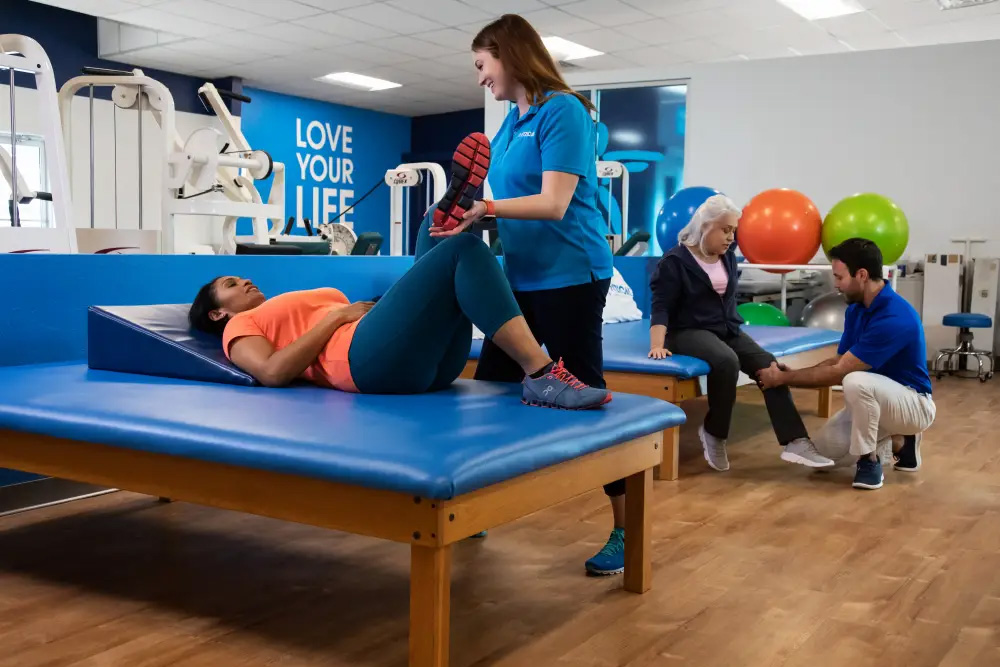
Knee rehabilitation is essential for regaining strength, flexibility, and mobility after an injury or surgery. Whether you’re healing from a torn ligament, meniscal repair, or dealing with chronic knee pain, following a structured rehab plan can make a significant difference in how fast and well you recover.
Let’s explore how a well-rounded rehabilitation routine can help restore your knee health and prevent future injuries.
Why Knee Rehabilitation Matters
Knee issues are common and can arise from:
- Sports injuries (twists, falls, collisions)
- Aging and joint degeneration
- Overuse from repetitive motion or prolonged standing
- Improper movement or poor footwear
According to Dr. Jhones L. from physicaltherapycoralsprings.com, “Without proper rehabilitation, knees can become weak, stiff, and prone to further injury. A rehab plan combining rest, strengthening, and stretching ensures lasting recovery.”
Phase 1: Initial Recovery Phase
Key Goals: Reduce Swelling, Protect the Knee, and Begin Gentle Movement
Rest and Care
- Keep the knee elevated to reduce swelling.
- Apply ice packs for 15–20 minutes several times a day.
- Use a compression bandage for support.
- Take pain relievers only as advised by your doctor.
- Use crutches if weight-bearing is painful or not recommended.
Gentle Mobility Exercises
- Seated knee bends: Sit on a chair and slowly bend and straighten your knee. Do 10 reps.
- Heel slides: Lie on your back and slide your heel toward your buttocks, then back. Do 10 reps.
- Ankle pumps: Move your foot up and down 20 times. Improves circulation and reduces swelling.
These exercises help maintain range of motion and prevent stiffness.
Phase 2: Strengthening Exercises
Building strength around the knee provides support and stability.
Quadriceps (Front Thigh Muscles)
- Straight Leg Raises: Lie down, keep one leg bent and the other straight. Lift the straight leg slowly, hold for 2–3 seconds, and lower. Repeat 10–15 times.
- Wall Squats: Stand with your back against a wall. Slide down into a squat position (not below 90°), hold for 10–15 seconds, then rise. Repeat as tolerated.
Hamstrings (Back Thigh Muscles)
- Hamstring Curls: Stand and hold a chair. Bend your knee, bringing your heel toward your glutes. Lower slowly. Repeat 10–15 times.
- Bridges: Lie on your back with knees bent. Lift your hips off the ground, hold, then lower. Strengthens hamstrings and glutes.
Phase 3: Flexibility and Mobility
Stretching improves flexibility, reduces stiffness, and aids in recovery.
Daily Stretching Routine
- Hold each stretch for 20–30 seconds, repeat 2–3 times.
- Stretch quads, hamstrings, calves, and hip flexors.
- Use a towel or strap for assistance if needed.
Joint Mobility Exercises
- Knee extensions and flexions: Bend and straighten the knee gently.
- Knee rotations: While sitting, rotate the lower leg left and right slowly.
These keep the joint loose and maintain smooth movement.
Phase 4: Balance and Stability
Why Balance Matters
Proprioception—the body’s awareness of joint position—is often affected after injury or surgery.
Balance Exercises
- Single-leg stands: Stand on one leg for 20–30 seconds. Use a support if needed.
- Wobble board or balance pad: Stand and balance to activate stabilizing muscles.
- Heel-to-toe walk: Walk in a straight line, placing one foot directly in front of the other.
Core Strengthening
A strong core supports proper posture and knee function.
- Planks: Hold for 20 seconds, increase as you improve.
- Bridges: Engage your core and glutes simultaneously.
Phase 5: Advanced Strengthening and Functional Training
As strength returns, increase the challenge with resistance and functional training.
Resistance Training
- Use resistance bands, light weights, or gym equipment.
- Focus on squats, lunges, step-ups, and deadlifts (under supervision).
- Form matters: avoid twisting, collapsing knees inward, or rushing movements.
Plyometric Training (Optional, For Athletes)
- Start with mini jumps, progressing to jump squats or box jumps.
- Always land softly to minimize joint impact.
- Do on padded or shock-absorbent surfaces.
Cardiovascular Conditioning
Low-impact cardio helps improve endurance without stressing the knees.
Best Cardio Options
- Walking (start short, increase time/distance gradually)
- Swimming (buoyancy reduces joint strain)
- Stationary biking (adjust seat for comfort and joint alignment)
These options support recovery while maintaining heart health.
Preventing Future Injuries
Warm-Up & Cool-Down
- Warm up with 5–10 minutes of light cardio (walking or cycling).
- Stretch key muscle groups post-workout to prevent tightness.
Consistency is Key
- Regular strength training, balance work, and flexibility exercises protect your knees long-term.
- Incorporate 2–3 sessions per week for ongoing knee health.
Lifestyle Tips
- Wear proper shoes with good arch support.
- Avoid prolonged sitting or standing without movement.
- Maintain a healthy weight to reduce knee joint stress.
Recommended clinic in Coral Springs
FYZICAL Therapy & Balance Center Coral Springs ((954) 779-4549)
Frequently Asked Questions
How Do You Rehabilitate Your Knees?
By performing strength, flexibility, and mobility exercises consistently. Combine this with rest, ice, and guidance from a physical therapist.
Can Damaged Knees Recover?
Yes, with proper care and rehab, many knee injuries heal completely. Recovery time depends on injury severity and compliance with treatment.
How To Repair A Weak Knee?
Use targeted exercises like leg raises, bridges, and resistance training. Also, wear supportive footwear and stay active within your limits.
What Is The Fastest Way To Relieve Knee Pain?
Use ice packs, elevate the leg, compress the joint with a bandage, and take doctor-approved pain relievers. Gentle movement can also help.
Conclusion
Rehabilitating your knee may take time, but each step you take brings you closer to full recovery. Stick to your rehab plan, listen to your body, and stay committed. Whether it’s walking pain-free, returning to sports, or simply enjoying everyday life—strong knees make it possible.
Remember:
- Be consistent, not perfect.
- Progress slowly, but steadily.
- Trust your therapist and medical team.
Celebrate small victories—they add up.